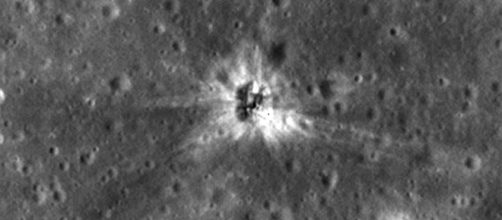Scientists have theorized for about half a century that ice exists in permanently shadowed craters at the moon’s south and north poles. The idea is that comets have deposited the ice in the craters over billions of years where it has remained in the sub-zero cold traps, never seeing the sun. Space probes such as the Clementine and Lunar Prospector have detected signs of this ice as readings of hydrogen emitting from the craters. Now, the Lunar Reconnaissance Orbiter has discovered what is likely to be frost in craters at the lunar South Pole.
Why do scientists think frost is on the moon?
Scientists studying data returned from the Lunar Reconnaissance Orbiter have been comparing areas at the south pole of the moon that has shown as brighter than usual on LRO images with areas that are sufficiently cold to sustain ice. Those areas where the two conditions coincide are presumed to be patches of frost.
The frost does not resemble frozen lakes or skating rinks, but rather ice crystals residing on the surface, likely mixed in with the lunar regolith. Oddly, such deposits of frost have not been detected at the moon’s north pole.
Implications of water ice on the moon
Scientists have surmised that billions of tons of Water Ice likely exists in cold traps in craters near the moon’s poles.
The discovery of frost on the surface of the bottoms of these craters is the best direct evidence that such ice is really there, ready to be extracted, studied, and used.
Scientists are excited about finding ice on the moon because they believe that studying it can give them insights into how water was deposited on Earth, also by comets, over billions of years, creating the oceans and rivers that comprise 70 percent of the planet’s surface. The presence of so much water is one reason why life first emerged on Earth and eventually evolved into human beings.
However, the implications of water are even more profound for hopes of future lunar settlements and deep space exploration. Water can be used for drinking, hygiene, and agriculture by future lunar settlers.
The water can also be refined into hydrogen and oxygen, making the moon into a giant fuel depot for spacecraft headed to destinations in deep space, such as Mars.
The next step
The next step would be to send prospector rovers into those craters to sample and study the ice deposits. NASA has been considering the idea of a resource prospector rover to land on the moon’s south pole, though the mission has yet to be manifested. A number of private companies, such as Moon Express and Astrobotic, are also interested in prospecting and extracting lunar ice. China is very keen on mining the ice for its own lunar ambitions.


